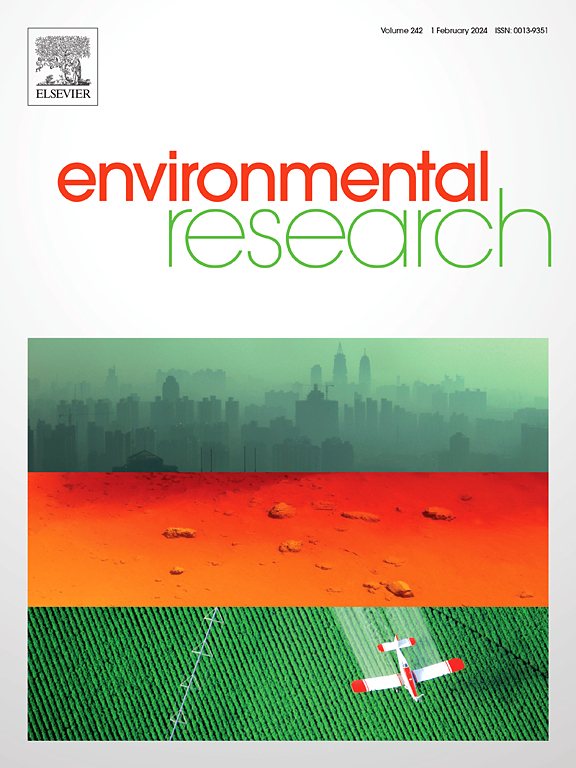新型钛锰二元氧化物去除印染废水中锑的机理研究。
IF 7.7
2区 环境科学与生态学
Q1 ENVIRONMENTAL SCIENCES
引用次数: 0
摘要
锑是一种危害环境和人体健康的有毒重金属。为满足印染废水(PDW)高效除Sb的需求,本研究采用沉淀法合成了一种新型钛锰二元氧化物(T2M1BO)吸附剂。实验结果表明,T2M1BO对Sb(III)的吸附效率高于Sb(V),在pH为5时,对Sb(III)的最大吸附量为323.19 mg/g,对Sb(V)的最大吸附量为273.65 mg/g。研究结果强调钛和锰氧化物之间的协同作用,增强了锑的吸附。吸附符合拟二级动力学模型,符合Freundlich等温线模型。Sb(V)的吸附涉及表面金属羟基取代和球内络合物的形成,而Sb(III)的去除需要更复杂的方法,包括吸附和氧化过程。T2M1BO具有合成简单、效率高、可循环利用等优点,是可循环废水处理中除锑的理想材料。本文章由计算机程序翻译,如有差异,请以英文原文为准。

Mechanism of removal of Sb from printing and dyeing wastewater by a novel titanium-manganese binary oxide
Antimony (Sb) is a toxic heavy metal that endangers both the environment and human health. In response to the growing need for efficient Sb removal from printing and dyeing wastewater (PDW), this study introduces a novel titanium-manganese binary oxide adsorbent (T2M1BO) synthesized via precipitation. Experimental results show that T2M1BO exhibited higher absorption efficiency for Sb(III) compared to Sb(V), with maximum adsorption capacities recorded at 323.19 mg/g for Sb(III) and 273.65 mg/g for Sb(V) at pH 5. The findings emphasize the synergistic interaction between titanium and manganese oxides, which enhances the adsorption of antimony. Adsorption followed a pseudo-second-order kinetic model, consistent with the Freundlich isotherm model. While Sb(V) adsorption involved surface metal hydroxyl group replacement and inner-sphere complex formation, Sb(III) removal required a more complex approach, incorporating adsorption and oxidation processes. The straightforward synthesis, high efficiency, and recyclability of T2M1BO position it as a cpromising candidate for antimony removal in recyclability wastewater treatment.
求助全文
通过发布文献求助,成功后即可免费获取论文全文。
去求助
来源期刊

Environmental Research
环境科学-公共卫生、环境卫生与职业卫生
CiteScore
12.60
自引率
8.40%
发文量
2480
审稿时长
4.7 months
期刊介绍:
The Environmental Research journal presents a broad range of interdisciplinary research, focused on addressing worldwide environmental concerns and featuring innovative findings. Our publication strives to explore relevant anthropogenic issues across various environmental sectors, showcasing practical applications in real-life settings.
 求助内容:
求助内容: 应助结果提醒方式:
应助结果提醒方式:


